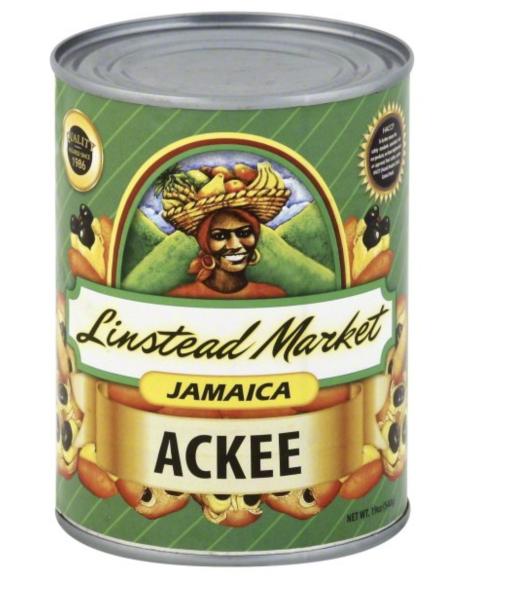
You may want to temper your expectations if The Fruit and Spice Park in Homestead, Florida, is on your itinerary. The spices aren't anything you couldn't snort at Winn Dixie, and you're just as likely to find a Volkswagen hanging from a tree as a piece of fruit. Except for this one.

The Ackee Tree (Blighia sapida), found mostly in Jamaica and Western Africa, bears fruit best left alone when not ripe. It contains a couple of seriously awful poisonous chemicals. Photo: J-Man Studios
Was it worth the $20 admission? That depends on whether this article is worth $20. Who knows? Either way, it taught me about a structurally interesting class of toxins and how they work. And these aren't your everyday neurotoxins like those found in the red tide currently plaguing the Gulf Coast of Florida. (See: Red Tide Hits Florida's Gulf Coast: A Dreaded Neurochemistry Lesson From Hell). No, the unripened ackee fruit contains a couple of nasties called hypoglycin A and hypoglycin B (aka "soapberry toxins"); these are metabolic toxins (1). The hint is the name – hypoglycin is derived from hypoglycemia, the mechanism by which the toxins can be lethal. Hypoglycins short-circuit fatty acid metabolism, which (as you'll see below) causes some awful symptoms, sometimes called Jamaican vomiting sickness. (To simplify this mess, I will not discuss hypoglycin B, which is less toxic and operates by the same mechanism.)
Ingestion of unripe Ackee fruit may result in the metabolic syndrome known as "Jamaican vomiting sickness." Clinical manifestations may include profuse vomiting, altered mental status, and hypoglycemia. Severe cases have been reported to cause seizures, hypothermia, coma, and death.
Surmaitis and Hamilton, StatPearls Publishing; January, 2023
What is going on?
First of all, you need to know that hypoglycin A itself is not toxic; it is a prototoxin – a non-toxic substance that is converted into a toxin by your body. Here's how it works. Sort of.

Hypoglycin is metabolized in two enzyme-catalyzed steps to form the toxin methylene cyclopropyl acetic acid (MCPA). I could tell you how this works, but I won't because approximately one of you (you know who you are) would understand it. Suffice it to say that MCPA is then converted into MCPA-CoA (see note 2) and then inserts itself into the process of lipid metabolism. The next thing you know, your body is no longer properly using fat to generate energy so it starts to consume glycogen (the storage form of glucose). Then it gets ugly in the form of "Jamaican vomiting sickness." People who consume enough hypoglycin will see their blood sugar drop like a rock (3) and experience the symptoms of severe hypoglycemia (and then some). The antidote is...feel free to guess it.
It is intuitively obvious that any kind of vomiting sickness ought to be avoided, but this one is worse. Here is a list of symptoms:
- profuse vomiting
- altered mental status
- hypoglycemia
- seizures
- hypothermia
- coma
- death
But people do eat ackee
Not only is it eaten, but it is the national fruit of Jamaica, where it has been eaten for centuries. You can even buy it canned. The secret is timing. The seeds of the plant and the fruit of unripe ackee contain a whole lot of hypoglycin, but as the fruit ripens, the amount of the chemical wanes:

(Left) Variation of hypoglycin A in six different stages of maturity. (Right) Photos of unripe and ripe ackee. Source: J Agric Food Chem 2011 Apr 27;59(8):3869-75. doi: 10.1021/jf104623c. Epub 2011 Apr 4.
So, next time you're visiting South Florida and want to see a lot of cool fruit, try the Robert is Here Fruit Stand, (4) which is only about five miles from the "Fruitless Spice Park." Your $20 will go a lot further, and if you buy the ackee, it will be nice and ripe.

Free Images: Dave Malkoff, Flickr
Notes:
(1) Hypoglycins are also found in unripe lychees and a few other fruits.
(2) For nerds only. Don't say I didn't warn you...

Once MCPA-CoA forms it is reactive at both positions indicated by the yellow arrows. A nucleophile, such as an amine (shown), can react at either position, opening up the cyclopropane ring and then rearranging to give an irreversibly inactivated coenzyme A derivative.
(3) MCPA also screws up glucose formation (glucogenesis) by a similar mechanism, so it's really a double whammy.
(4) I'll be damned! I sent this article to Robert is Here and got an immediate response thanking me for my support but also letting me know that they do not sell ackee there. Maybe a fruit liability insurance thing?



